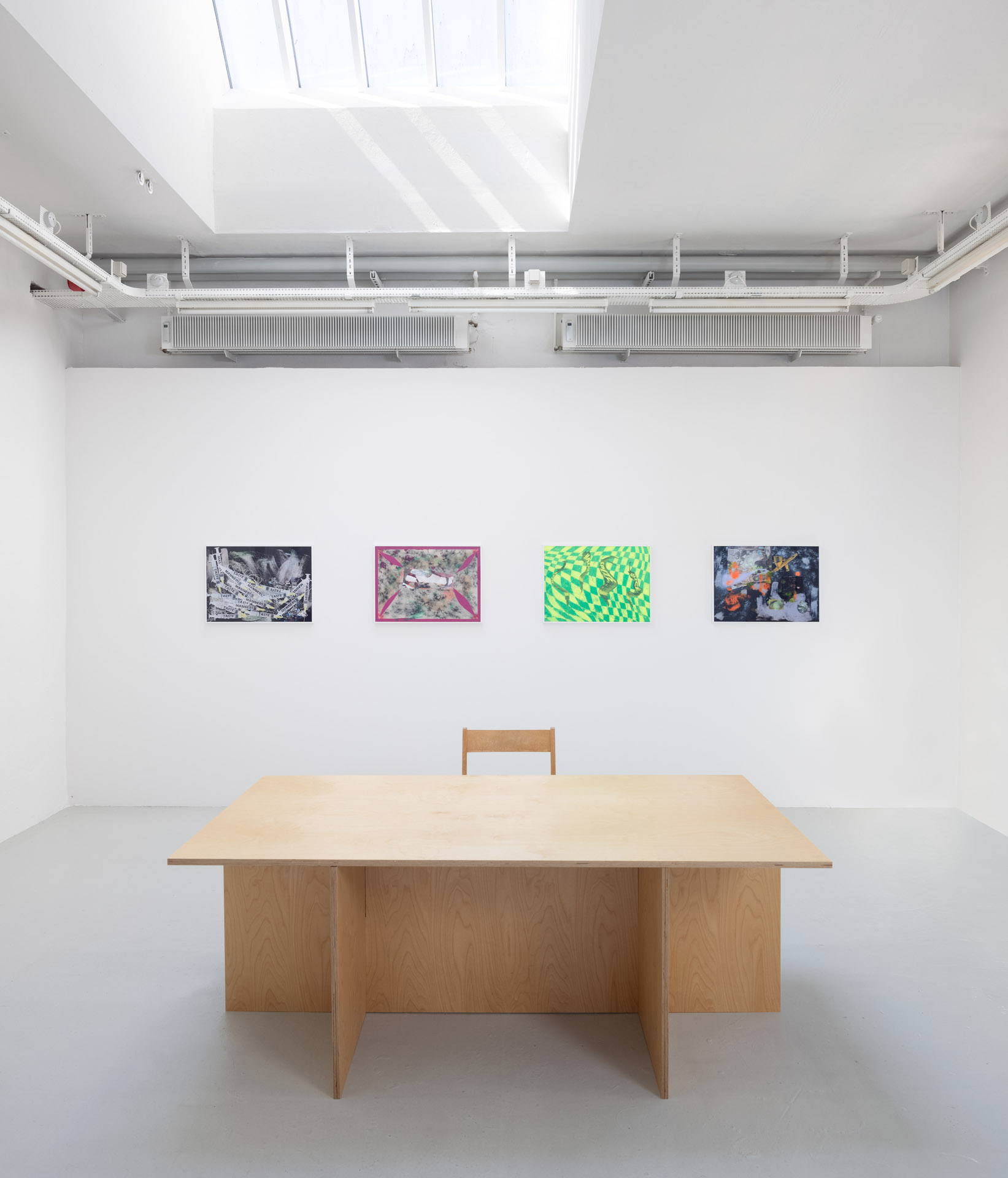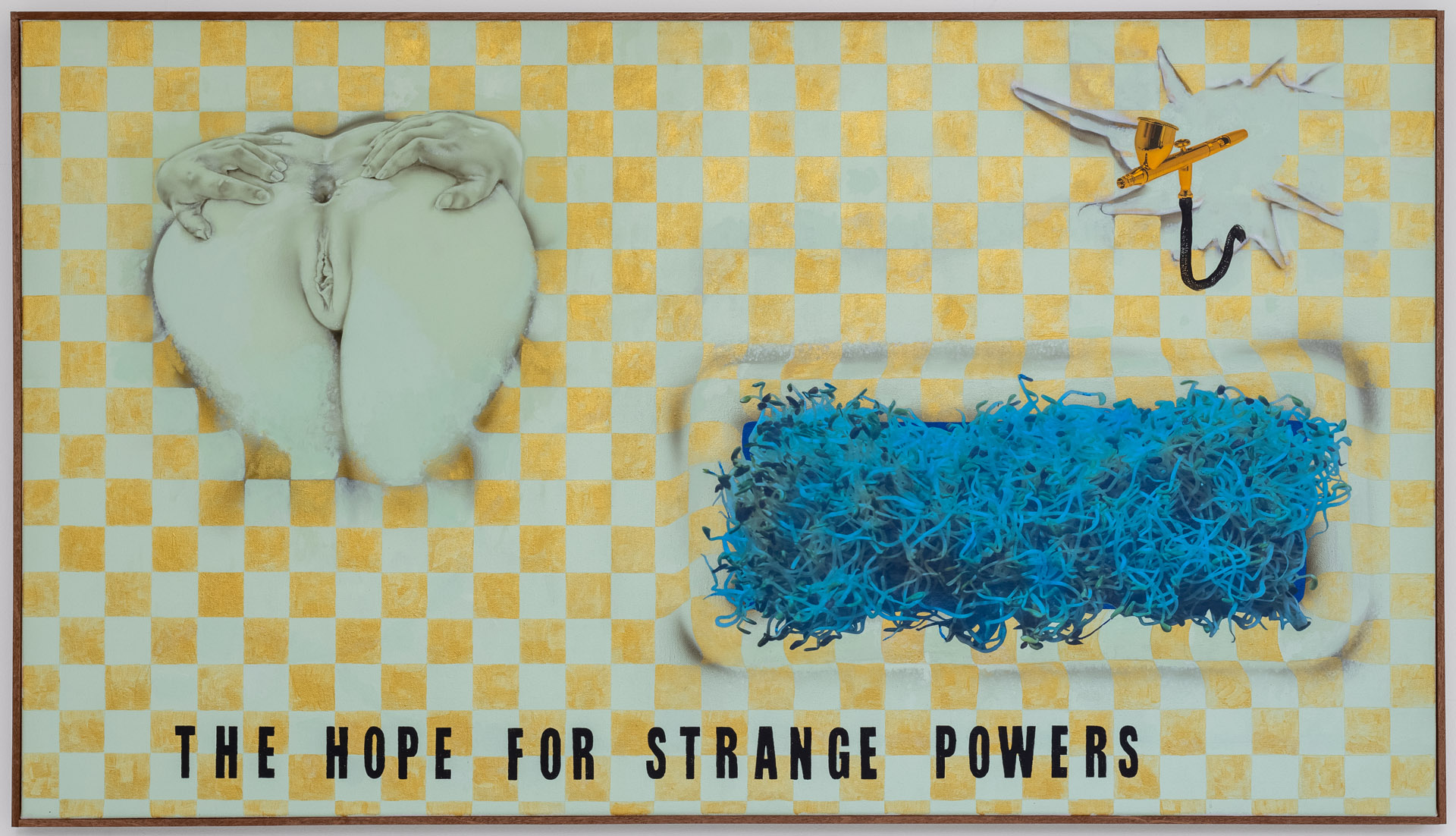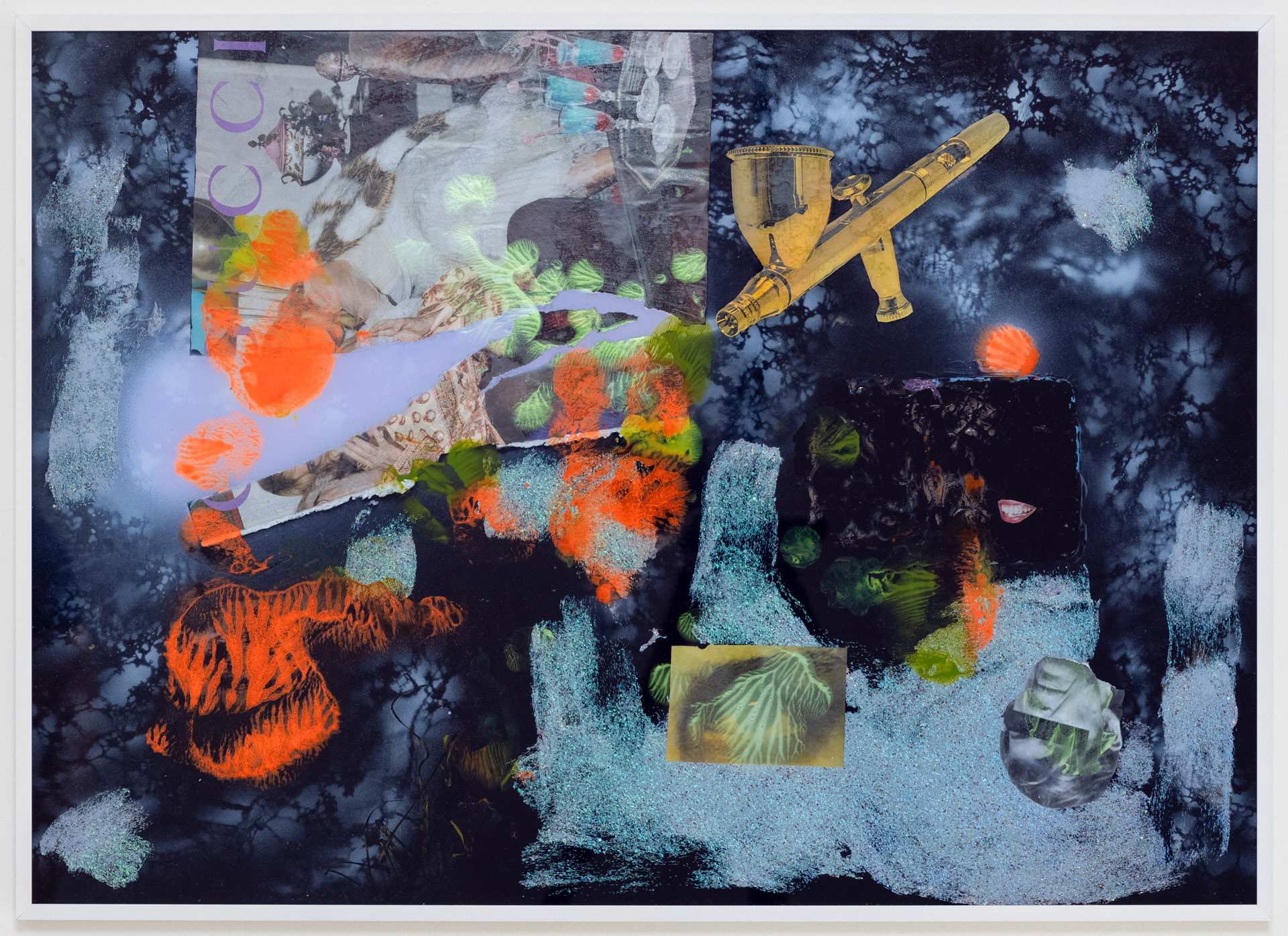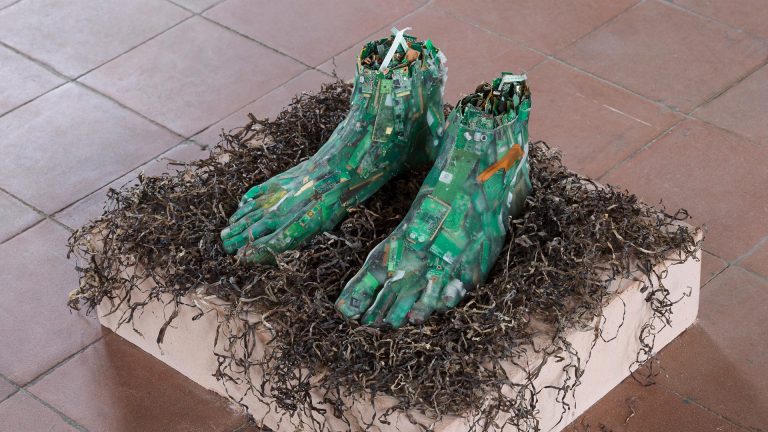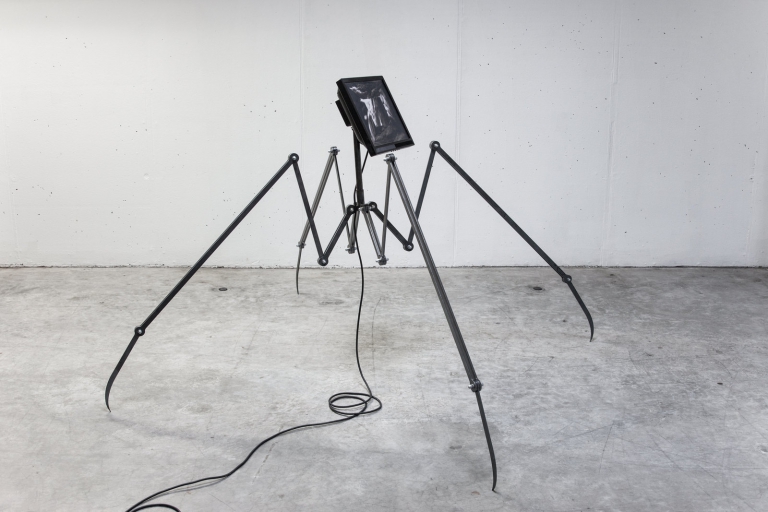Artist: Zoe Barcza
Exhibition title: Birth Refusal
Venue: Bianca D’Alessandro, Copenhagen, Denmark
Date: May 28 – July 3, 2021
Photography: Photos by Jan Søndergaard. All images courtesy the artist and Bianca D’Alessandro, Copenhagen
“Unlike propositional logic, first-order logic is undecidable (although semidecidable), provided that the language has at least one predicate of arity at least 2 (other than equality). This means that there is no decision procedure that determines whether arbitrary formulas are logically valid. This result was established independently by Alonzo Church and Alan Turing in 1936 and 1937, respectively, giving a negative answer to the Entscheidungsproblem posed by David Hilbert and Wilhelm Ackermann in 1928. Their proofs demonstrate a connection between the unsolvability of the decision problem for first-order logic and the unsolvability of the halting problem” (Wikipedia)
The Turing machine has a computability problem when it reaches the halting problem, where a machine will loop and cannot self-terminate. Zoe Barcza depicts a fantastical overdrive of representational painting, underscoring the limits of computability and therefore any first-order predicate logic.
“Falling outside the parameters of conventional philosophy, the concept of hyperstition subscribes to what French post-structuralists Deleuze and Guattari have broadly termed schizoanalysis. Unlike conventional philosophy, with “its predilection for Platonic-fascist top-down solutions,” explains Nick Land in Meltdown, schizoanalysis avoids seeing ideas as static (1995:2). Rather, it favours an approach that sees ideas as diagrams that are “additive rather than substitutive, and immanent rather than transcendent: executed by functional complexes of currents, switches and loops, caught in scaling reverberations” (1995:2). Primed to create what Deleuze and Guattari have termed Bodies without Organs (BWOs) – namely metaphorical exploration devices of the kind crafted by engineers, artists and even junkies to ‘map’ new cognitive territories – schizoanalysis denotes a technique that can be utilised for analysing hyperstitions. The BWO, like a hyperstition, indicates an inchoate flux of deterritorialised energy; a speeding up. After all, the investigation and crafting of novel directions for culture, implied by BWOs and other types of schizoanalysis, necessitates an investigation of the very mechanisms of cultural overdrive or meltdown. Fictions that explore these areas are in themselves hyperstitional, functioning to speed things up and bring about the very condition of apocalypse.” (http:// xenopraxis.net/readings/carstens_hyperstition.pdf)
Barcza paints bodies that transform into bodies without organs, contrasting the neurotic-fascizoid pole with the schizoid-revolutionary pole. The immanent hypersition feedbacks into an autopoietic manifestation of the fictional narrative. Barcza exposes the limits of any apophantic amphibology between the ontic and the ontological by satirizing the neurotic mannerisms of taste economy and the Wittgensteinian “neurotic obsession for rigor”. The Lacanian Idiot-King is exposed as what he prohibits. The King of England cannot be called an idiot or you will be beheaded. The interdiction only reinforces the truth that the censored discourse reveals that the King is in fact an idiot. Everything points to the truth of what is prohibited. Barcza in one work identifies with her subcultural identity (the show is also called “Birth Refusal”, a Wolf Eyes side-project), but only as a parody of itself, where the Butlerian imitation of the sign (for example, the performance of drag) becomes realer than real. But Barcza clenching for authenticity becomes a maniacal over-identification with a neurotic credos, which self-destructs and reveals the insidious hyperstition, just as fictional as capitalism or Christianity itself, namely, the logocentric phallocentric pole of the Noise-Tyrant: an encyclopedic perfectionism and structurally systematic ontology. In Barcza’s own words, the paintings are “gratuitous images that self-destruct.”
Levinas’ critique of Heidegger’s project is a point of departure for Barcza, where the subject is inverted and not constituted through its relation to ontological taxonomy and the order of connections from word/entity (to finite mode of access) to Being, but rather reversed and constituted through the Face of the Other and its silence. The Infinity which escapes Totality. The limits of first-order predicate logic expose fundamentally unsolvable problems, which could only be the radical alterity of the Other, within the subjective-computationalist phenomenology. The uncomputable problems are satirized here in Barcza’s paintings through an explicitly sexual discourse, which points to the jouissance/ pain/pleasure which exists prior to any symbolic language and moreover, what she refers to as “the hope for strange powers,” through the possibilities of pataphysics, surrealism etc which precede rationality. But Barcza is fully aware of the pitfalls of such a magical swindle! She directly references The Final Unfettering (a translation of the German text Handbrevier für Hochstapler (Handbook for Swindlers)) in the “strange powers” quote appearing in one painting. Maybe her bodies are actually being contorted into functionalist Turing-complete descriptions of mind, as opposed to a naive magical realism, and by extension, the chaotic-deterministic dynamism of such an intersubjective system, be it the weather or the stock market or heat transfer (or, for that matter, any system predicated on Brownian motion) has a virtual potentiality in its medium-specific generativity of the flow, production, desiring-machine. This medium-specific generativity eventually constructs fictional narratives such as Landian hyperstitions, in its intensification, scalability and memeification. The bodies are mere allegories for the codes which we digest, be it the Wojak or the Chad or Stacy, in today’s Societies of Control.
Barcza inhabits a painterly idiom that post-ironically achieves the same medium of virtual potentiality, through her oedipalizing the very codes which frame her canvases, i.e. codes of the internet, capitalism, the alt art world ideology of cynical painting vis-a-vis the dominant ideology of bluechip galleries, the network/painting beside itself. Through oedipalizing this sediment, she achieves a seamless transition between form and content. She paints the codes which frame the subject/artwork within the subject/artwork as the material for subjective depiction itself. In her paintings, Barcza flippantly oscillates between depicting structuralist Mirror-Stage scenarios (but as a ruse) or alternatively, post-structuralist Deleuzo-Guattarian desiring-machines.
“The importance of the concept is indicated by Lacan’s description of objet a as a semblant that fills the void left by the loss of the primary object. If we can explore the nature of this semblant, we shall be able to come to a better understanding of some aspects of objet a. For Lacan a semblant is an object of enjoyment that is both seductive and deceptive. The subject both believes and doesn’t believe in semblants but in any case opts for them over the real thing because paradoxically they are a source of satisfaction, better than the real thing that one avoids any encounter with at all cost. Or more accurately, because the semblant fills a lack, we should say that the semblant comes to the place where something should be but isn’t, and where its lack produces affects focusing on anxiety.” (https://www.lacan.com/ griggblog.html)
All in all, Barcza’s paintings depict bodies which are either mere Semblants in a Borromean knot of desire (neurotic-fascizoid pole) or mere Bodies Without Organs which have suspended their neurotic functionality/organs (schizo-revolutionary pole). But once again, bodies which are constituted from the material detritus which we inhabit – the very codes which determine us abstractly. Whether you decide to pursue the phantasm of the Real or a productive partialism of the body, i.e. structuralist or post-structuralist, is all semantics. (Semantics over the infinite excess of fundamentally uncomputable systems of relation.)
-Eric Schmid, 2021
Zoe Barcza, Birth Refusal, 2021, exhibition view, Bianca D’Alessandro, Copenhagen
Zoe Barcza, Birth Refusal, 2021, exhibition view, Bianca D’Alessandro, Copenhagen
Zoe Barcza, Birth Refusal, 2021, exhibition view, Bianca D’Alessandro, Copenhagen
Zoe Barcza, Birth Refusal, 2021, exhibition view, Bianca D’Alessandro, Copenhagen
Zoe Barcza, Birth Refusal, 2021, exhibition view, Bianca D’Alessandro, Copenhagen
Zoe Barcza, Birth Refusal, 2021, exhibition view, Bianca D’Alessandro, Copenhagen
Zoe Barcza, Birth Refusal, 2021, exhibition view, Bianca D’Alessandro, Copenhagen
Zoe Barcza, Birth Refusal, 2021, exhibition view, Bianca D’Alessandro, Copenhagen
Zoe Barcza, Subculture Beyotch, 2021, Acrylic, vinyl paint, enamel and collage on canvas, 200 x 170 cm
Zoe Barcza, Subculture Beyotch, 2021, Acrylic, vinyl paint, enamel and collage on canvas, 200 x 170 cm
Zoe Barcza, Subculture Beyotch, 2021, Acrylic, vinyl paint, enamel and collage on canvas, 200 x 170 cm
Zoe Barcza, Subculture Beyotch, 2021, Acrylic, vinyl paint, enamel and collage on canvas, 200 x 170 cm
Zoe Barcza, Polycule Cringe, 2021, Acrylic, vinyl paint and collage on canvas, artist’s frame, 121 x 101 cm
Zoe Barcza, Polycule Cringe, 2021, Acrylic, vinyl paint and collage on canvas, artist’s frame, 121 x 101 cm
Zoe Barcza, Polycule Cringe, 2021, Acrylic, vinyl paint and collage on canvas, artist’s frame, 121 x 101 cm
Zoe Barcza, Polycule Cringe, 2021, Acrylic, vinyl paint and collage on canvas, artist’s frame, 121 x 101 cm
Zoe Barcza, A Satire, 2021, Acrylic, vinyl paint, and collage on canvas, 160 x 130 cm
Zoe Barcza, A Satire, 2021, Acrylic, vinyl paint, and collage on canvas, 160 x 130 cm
Zoe Barcza, A Satire, 2021, Acrylic, vinyl paint, and collage on canvas, 160 x 130 cm
Zoe Barcza, A Satire, 2021, Acrylic, vinyl paint, and collage on canvas, 160 x 130 cm
Zoe Barcza, A Neurotic Obsession For Rigor, 2021, Acrylic, vinyl paint and collage on canvas, artist’s frame, 160 x 90 cm
Zoe Barcza, A Neurotic Obsession For Rigor, 2021, Acrylic, vinyl paint and collage on canvas, artist’s frame, 160 x 90 cm
Zoe Barcza, A Neurotic Obsession For Rigor, 2021, Acrylic, vinyl paint and collage on canvas, artist’s frame, 160 x 90 cm
Zoe Barcza, A Neurotic Obsession For Rigor, 2021, Acrylic, vinyl paint and collage on canvas, artist’s frame, 160 x 90 cm
Zoe Barcza, Open-ended (Superstition Is the Fruit of United Idiots and the Hope for Strange Powers), 2021, Acrylic, vinyl paint and collage on canvas, artist’s frame, 90 x 160 cm
Zoe Barcza, Open-ended (Superstition Is the Fruit of United Idiots and the Hope for Strange Powers), 2021, Acrylic, vinyl paint and collage on canvas, artist’s frame, 90 x 160 cm
Zoe Barcza, Open-ended (Superstition Is the Fruit of United Idiots and the Hope for Strange Powers), 2021, Acrylic, vinyl paint and collage on canvas, artist’s frame, 90 x 160 cm
Zoe Barcza, Open-ended (Superstition Is the Fruit of United Idiots and the Hope for Strange Powers), 2021, Acrylic, vinyl paint and collage on canvas, artist’s frame, 90 x 160 cm
Zoe Barcza, Nosebleed Velvet Vegan 8, 2021, Lil’ Daddy Roth metal flake, collage, and acrylic on plexiglass, 50 x 70 cm
Zoe Barcza, Nosebleed Velvet Vegan 9, 2021, Lil’ Daddy Roth metal flake, collage, and acrylic on plexiglass, 50 x 70 cm
Zoe Barcza, Nosebleed Velvet Vegan 10, 2021, Lil’ Daddy Roth metal flake, collage, and acrylic on plexiglass, 50 x 70 cm
Zoe Barcza, Nosebleed Velvet Vegan 11, 2021, Lil’ Daddy Roth metal flake, collage, and acrylic on plexiglass, 50 x 70 cm








